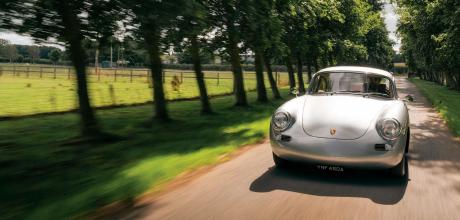157bhp restomod 1962 Porsche 356 B T6 Coupe
Starting life as a 1962 Porsche 356 B T6 Coupe, this beautifully restored air-cooled classic is now packing bespoke body styling and a 1.9-litre flat-four pumping out 157bhp and 141lb-ft torque thanks to extensive modification during the height of the pandemic...
PERFECT ISOLATION
A 356 B T6 restomod lockdown project.
Words Dan Furr
Photography Rich Pearce
Lockdowns brought about by COVID-19 fuelled a somewhat unexpected boom in the automotive aftermarket. Mainstream media suggested the bottom would fall out of the classic and modern-classic car scene due to owner inability to hit the road, commentators going on to hypothesise cherished four-wheelers would suddenly become little more than expensive ornaments.
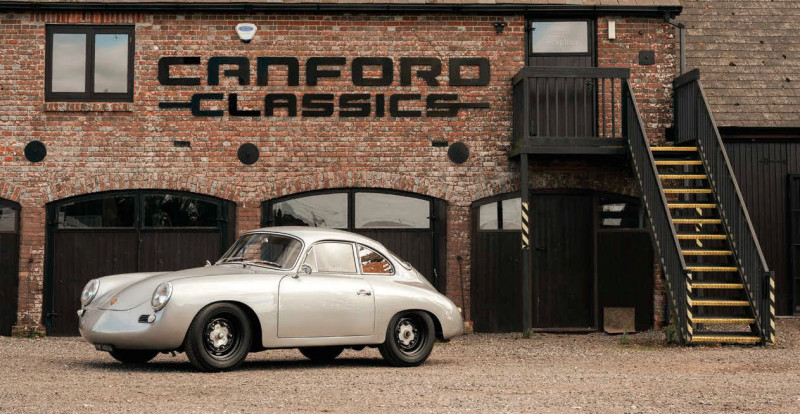
This analysis of the situation turned out to be extraordinarily wide of the mark — demand for cool older cars reached new highs, while the value of premium marque legacy models, such as air-cooled Porsches, shifted far beyond price rises observed in the wake of the Great Recession, another global event naysayers suggested would call time on the inflated values of retro rides. The fortunes of automotive parts manufacturers and retailers, many of whom feared catastrophic consequences for their bottom line when the pandemic began, also peaked. In fact, virtually every such business I’ve spoken to about the impact coronavirus and lockdowns had on their trade told me they’d recorded their best-ever sales figures, month on month, throughout the worst of the pandemic.
THE COMPLETE BUILD TOOK TWO YEARS, THE MAJORITY OF WORK UNDERTAKEN DURING THE HEIGHT OF THE PANDEMIC
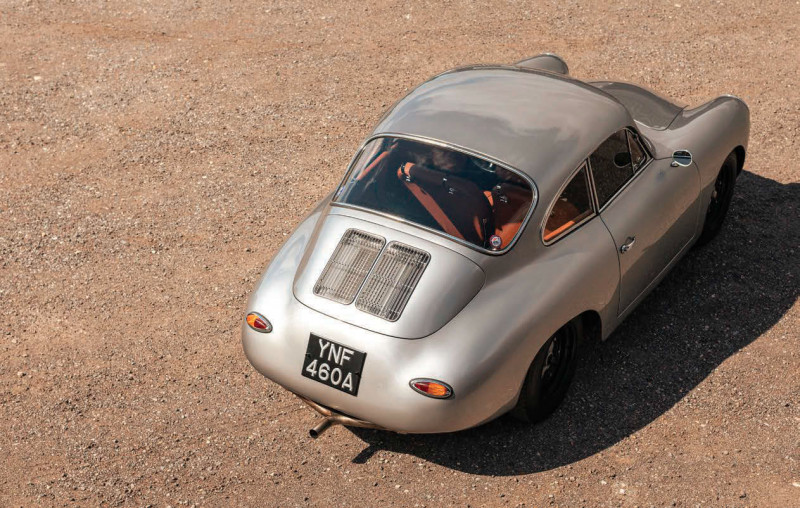
There are myriad reasons for this defiance of expectation. Not being able to go on holiday — coupled with not being able to enjoy a social life outside the home for the best part of two years — left many classic car owners with extra cash in their pockets. Mortgage pausing also played its part, affording homeowners the opportunity to interrupt their monthly mortgage payments as a way of compensating for loss of earnings, which in an abundance of cases, failed to materialise.
A FLAT-FOUR LIFTED TO 1.9 LITRES AND BREATHING THROUGH K&N AIR FILTERS ATOP JENVEY THROTTLE BODIES
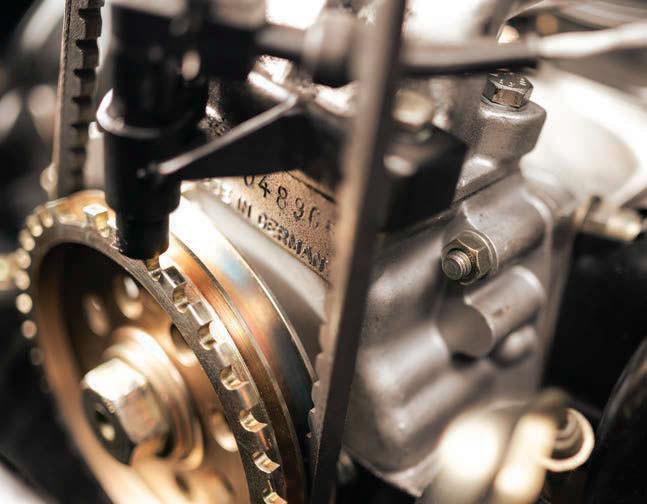
Meanwhile, government-issued grants and super-low-interest- rate bounceback loans taken by those who didn’t end up needing them saw a high number of selfemployed classic car owners with additional cash in their pockets. And, with the majority of the nation told to work from home, not only did commuters save money by not having to travel to and from their place of employment, they suddenly found themselves with the added bonus of extra leisure hours either side of the working day. Unexpected disposable income and the revelation of additional free time gave owners of classic and modern-classic cars the perfect opportunity to duck into their garages, pick up a set of spanners and tackle jobs they’d previously postponed. Progress on project cars and restorations ramped up to new highs, activity which saw a sharp spike in the number of orders parts retailers were asked to fulfil, hence those record-breaking sales figures.
As lockdown began to ease, some would-be classic car owners who’d spent the pandemic considering their own mortality decided life is simply too short to put off buying the vehicle for ‘high days and holidays’ they’d always promised themselves. Demand for older cars increased accordingly. Interest was also coming from those who had laid down a deposit for a brand-new car, only to be told a worldwide shortage of microprocessors equated to a significant delay in their order being put into effect. Many of these buyers decided to buy a classic or modern-classic car to have fun with until their new motor was ready for delivery. Porsches (especially early Boxsters) proved particularly popular. Incidentally, a great number of these buyers are still waiting for their new cars to appear.
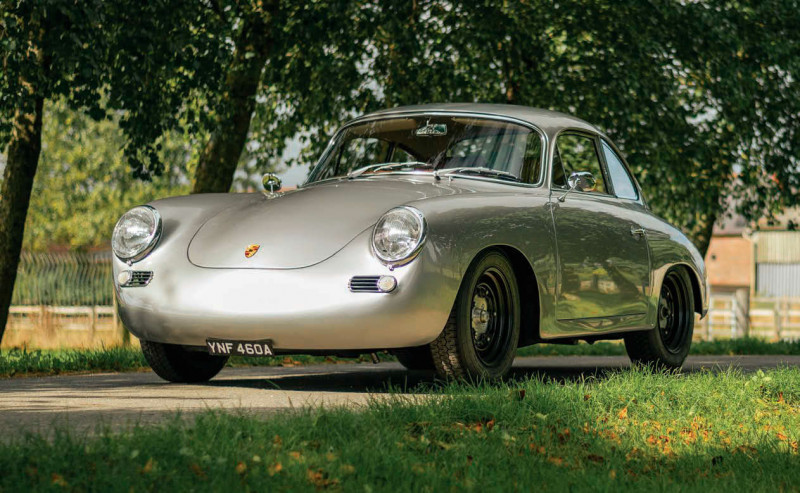
With lockdowns coming and going, and with it becoming increasingly obvious the pandemic was a long-term problem the world would need to deal with — we’re not out of the woods yet, folks — a large number of independent classic Porsche restoration specialists found themselves being asked to take on ambitious bespoke air-cooled restomod projects based on ground-up rebuilds. The wonderfully executed custom 356 you see on these pages is one such assembly, though when the car’s proud pilot, Adrian Hart, first contacted Dorset-based air-cooled Porsche restoration outfit, Canford Classics, he had a rather more aggressive end product in mind.
CHANGE OF DIRECTION
“Initially, Adrian wanted us to build him an RSR-inspired 911 hot rod,” recalls Chris Lowe, lead technician at Canford Classics. “Various end results were considered, but he wasn’t yet in possession of the 911 with which we were to turn his dream into reality.” Encouraged by positive conversations with company founder, Alan Drayson, Adrian went to look at a 911 he hoped would serve as the platform Canford Classics would work with. “He ended up buying a 356!” Chris laughs. “When he arrived to inspect the 911, he was struck by the 1962 356 B T6 sitting next to it. As it turned out, both cars were for sale. Adrian reasoned an Outlaw-influenced 356 restomod would be more distinctive than an RSR-aping 911 and subsequently struck a deal for the four-cylinder Porsche, which he presented to us a short time later.”
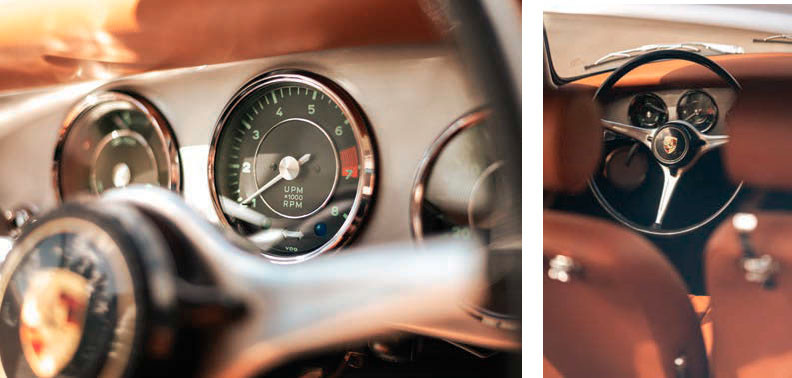
Whereas the 356 B T5 coupe was essentially a Cabriolet body with an optional hard-top welded in place, the 356 B T6 coupe was based on a new body design, retaining the drop-top’s rear end, but boasting a newly concocted roof and windscreen frame. Twin grilles appeared on the engine lid, the fuel filler was relocated to the offside front wing, the rear glass was enlarged and front disc brakes were added to the mix.
The 356 B was only in production for three years prior to the arrival of its successor, the 356 C, for the 1964 model year, but as was the case with all generations of the flat-four-powered Porsche, many subtle (and not so subtle) changes were made to model specification along the way. For a restorer charged with maintaining originality, these nuances must be keenly observed. Not so for Adrian’s build. “He wanted to personalise the car, to shake things up,” Chris smiles. “He’s very focused and had a clear idea regarding the 356 he wanted us to build. With significant changes to the Porsche’s body and powertrain on the cards, we were able to break free of period-perfect specification and go to town on bespoke details, borrowing design cues from across the 356 range and beyond.”
The front end is a case in point — you’re looking at 356 A horn grilles and indicators, plus a bumper delete. There’s similar personalisation at the rear of the car, but the work isn’t as straightforward as simply swapping parts out, one for another. “When you remove a 356’s back bumper and mounts,” Chris continues, “you’re left with exposed holes in the body, but also otherwise hidden panel pressings, which the bumper corners are designed to sit abreast of. You’re also faced with the puzzle of number plate illumination and what to do about the suddenly prominent reverse light. What sounds like the simple job of bumper removal suddenly leads to a host of challenges, all of which need to be solved, the work being applied at the highest possible standard.”
This is a Porsche currently celebrating its sixtieth anniversary, meaning before Chris, Alan and the Canford Classics team could contend with the detail, there was a huge amount of core bodywork to be taken care of. With this in mind, the car was completely stripped, media blasted and placed on the firm’s Celette jig. “The metal was in a fairly poor state,” Chris reveals. “There was rust everywhere, the door bottoms were no good and the front clip needed to be replaced.” As is the case with so many surviving 356s and early 911s, which weren’t worth a great deal of money in decades past, previous repair work had been conducted to a poor standard. “When the car was on our rotisserie, it was clear to see it had led a hard life, but as is the case with our 911 builds, we worked through every inch of the body, replacing panels and other metalwork where necessary, taking the car back to its standard basic state before working with Adrian to compile a wish list of modifications, which we could factor into all work from that point onward.”
Further simplifying the front end, the classic 356 frunk handle has been removed, replaced by a 911 bonnet badge. The fuel filler flap has also gone, as have the exterior sill trims. Smoothed, shimmering in GT Silver Metallic paint (matching the finish of Adrian’s 718 Cayman GTS) and rolling on black steelies, the thoroughly restored and modified body is at once both elegant and aggressive — its beauty is in the enhanced simplicity of Erwin Komenda’s original design, while the lack of bumpers and the sparkling paint deliver a look not dissimilar from the battle dress of early historic Porsche motorsport machines.
The sound is just as arresting. Emanating from a bespoke exhaust fabricated and flow-tested in-house at Canford Classics specifically for Adrian’s 356, it announces the presence of a flat-four lifted to 1.9 litres of displacement and breathing through K&N air filters atop Jenvey Dynamics DCOE-style Heritage throttle bodies.
“At first glance, you wouldn’t know fuel injection and aftermarket throttle bodies were at play,” Chris reasons. He’s not wrong — boasting all the plus points associated with individual throttle bodies, Jenvey’s Heritage line-up maintains the understated looks of a period carburettor induction set-up, thereby enabling seamless integration in the engine bays of a classic Porsche, like the 356 pictured here. “With some aftermarket throttle body kits, you get bright blue or red anodised fitting hardware and fasteners, totally at odds with the look of a standard classic 911 or 356 engine bay.” Not so with Jenvey’s Heritage range, which now extends to IDA3 throttle body kits comprising manifold with heat insulators, throttle bodies, electronic fuel injectors, integrated fuel rail, cross bank floating linkage (to allow for engine expansion), throttle position sensor and airhorns. “The look is very much in keeping with that of factory-fit carburettors, meaning these modern throttle bodies don’t look out of place bolted to an air-cooled Porsche boxer,” Chris adds.
A standalone DTA ECU manages fuel supply, while the engine itself makes use of valves custom manufactured by Canford Classics for this particular build. Power output is a punchy 157bhp with an accompanying 141lb-ft torque. The transmission is a rebuilt standard-specification cog swapper holding up very well, considering the big increase in power it’s being asked to deal with. As you’d expect, the car’s suspension has been thoroughly renovated from front to back, while the brakes have been upgraded to ensure stopping power is as effective as how quick the car can get up to speed — drums remain at the rear, but an Airkewld kit featuring Wilwood calipers with drilled discs resides at the nose.
Though difficult to tell when viewing the car side-on, the rear wheels have been banded, giving an extra halfinch of width and therefore an increased tyre contact patch, resulting in greater grip. The wider stance also provides an enhanced aesthetic. “The change isn’t immediately apparent,” Chris muses. “It’s quite subtle, but has a dramatic impact on the overall look of the car, proving seemingly small alterations, particularly those concerning wheel widths, ride height and the size of tyre sidewalls, can have a massive impact on the presentation of the build like this.” As far as the latter is concerned, Michelin XZX black circles have been called into action. A classic tubeless design, the XZX succeeded the Michelin ZX in 1976 as a continuation of the brand’s X-range of radial tyres. The sophisticated radial casting design and special tread pattern (featuring two large circumferential grooves and continuous lateral grooves) combine to maintain high mileage potential and provide exceptional adhesion, particularly in the wet. The XZX was partially replaced by the MX range of tyres in the mid-1980s, but remains available in twelve- and fifteen-inch fitment (the latter with the option of a white sidewall) from official Michelin stockist, Longstone Tyres, and is perfectly suited to the 356 we see here.
The interior of Adrian’s Porsche has been updated with the same attention to detail as the rest of the car. You won’t be surprised to discover there’s the not unusual switch from six-volt power to twelve, but look closely and you’ll spot gauges in the style of the 904 race car. The rev counter is driven by the aforementioned DTA ECU, ensuring the reading is immediate and, crucially, accurate.
The headlight switch has been relocated from the centre of the dashboard to the left of the ignition, while the original radio has been carefully reworked to offer Bluetooth functionality linking smartphone audio output to discreetly positioned modern speakers. A Webasto petrol heater (a requirement following elimination of the heat exchangers) has been stealthily installed, keeping the cabin warm through the original heater flaps. The rear seats, meanwhile, have been ditched.
As for the remaining furnishings, Canford Classics made a new carpet set in-house and fitted an Alcantara-trimmed headlining, as well as a wealth of soft tan leather, which finds itself wrapped around the door cards, dash top roll, seats, head rests, rear quarters and back panel. Seat belts colour-coded to match the body and a bespoke leather case for the onboard fire extinguisher round out the changes.
FAMILIAR TERRITORY
I ask Chris to outline the biggest challenge the project presented to the Canford Classics team. “I suppose it was working on a 356, as opposed to any specific conundrum the build threw at us,” he replies. “Canford Classics is renowned for its 911 builds, and though we have worked on 356s over the years, we don’t usually get involved with the heavy restoration of these cars.
Of course, our approach to metalwork is the same irrespective of the Porsche we’re dealing with — we absolutely exercise the same care and attention on a 356 as we would a classic 911. After all, these are old Porsches which love to attract rust and have often been subjected to poor body repairs long before they arrive at our workshop in Winterborne Kingston. The joy of working on Adrian’s car, though, was the freedom we had to move away from exacting original specification. The bigger engine and the Outlaw-inspired styling, for example, equated to major changes giving us a greater degree of flexibility with this build than we might have if restoring a 356 to factory-concours condition. Largely for this reason, the project was a lot of fun.”
Past tense. As the odometer indicates, this aircooled classic is now back with its owner following completion of initial shakedown mileage. The complete build took two years from start to finish, the majority of work undertaken during the height of the pandemic. “It was one of two major builds we worked on during the period,” Chris says. “The other was a 911 SC, which we backdated and equipped with a 3.5-litre flat-six.” Striking me as what Porsche might have come up with if it had decided to build an F-series GT3, this sensational 911 will be featured in next month’s issue of Classic Porsche. The UK economy nosediving and the threat of tactical nukes being fired in the direction of Western Europe are fresh challenges we need to deal with in the aftermath of peak pandemic, but away from a minority of morons doing their best to ruin life for the rest of us, Adrian’s lockdown-built 356 proves passion for Porsche is stronger than it ever was. Long may it continue!
Above The more you look, the more detail you notice, such as 356 A front-end hardware.
LOOK CLOSELY AND YOU’LL SPOT GAUGES IN THE STYLE OF THE 904 RACE CAR
Above Adrian opted for GT Silver Metallic as the colour for his 356, matching the shade applied to his 718 Cayman GTS at the factory Facing page The car as it looked when Adrian handed it to Canford Classics, plus a selection of photos taken during the restoration process. Above Rear bumper delete necessitated a huge amount of work at the back of the car, including deletion of usually hidden panel pressings Facing page Gorgeous tan leather replaces the bright red vinyl in the car when new.
Above Jenvey DCOE-style Heritage throttle bodies and a DTA ECU work together to release 157 galloping ponies
Above The plan was to build an RSR evocation, but Adrian was excited at the prospect of a personalised 356 coupe after spotting a tired 1962 T6 tin-top when looking for a 91 Below Exhaust system was fabricated in-house at Canford Classics and is designed specifically for the bespoke 1.9-litre flat-four


